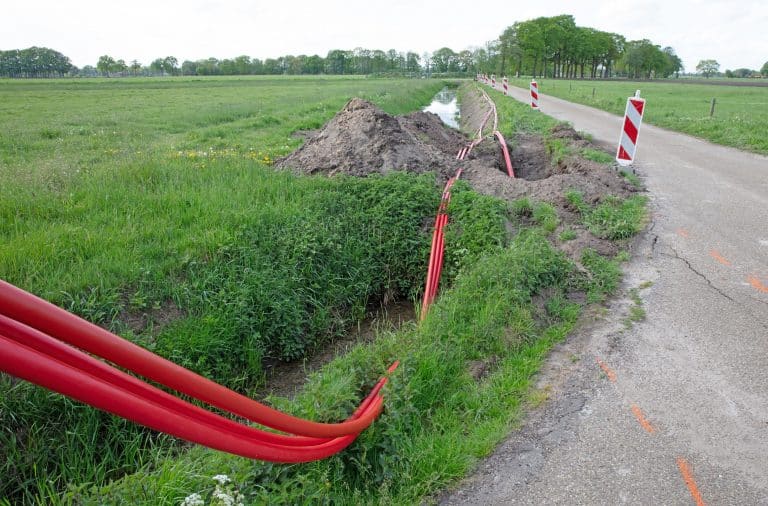Kandiyohi County is exploring the possibility of using economic relief from the federal government to fund its longstanding and much-needed border-to-border high-speed internet project.
“Kandiyohi County has been actively seeking and trying to improve broadband for the citizens of Kandiyohi County,” said Larry Kleindl, county administrator, during a Kandiyohi County Board of Commissioners work session concerning broadband internet on Tuesday.
The County Board held the work session in part to prepare to use its share of funds from the American Rescue Plan, the $1.9 trillion economic stimulus bill signed into law by President Joe Biden in early March, for possible broadband internet infrastructure. “We’re ready to hit the ground running,” Kleindl said.
With the exception of Kandiyohi County’s main corridor extending from Willmar to New London, the majority of the county’s internet access is considered either unserved or underserved by the Minnesota Department of Employment and Economic Development (DEED). Across the state, Kandiyohi County ranked 48 out of 87 for broadband internet access. Kandiyohi County fares particularly poor in its sparsely populated rural areas.
“We have more cows than we have people in some of those areas. But that doesn’t mean people who live in those areas don’t need broadband and don’t need services,” Kleindl said.
Connie Schmoll, business development manager for the Kandiyohi County and City of Willmar Economic Development Commission (EDC), who has long championed high-speed internet in the county shared her concerns. “Broadband is important. We need it in Kandiyohi County and rural areas, just as much as in the cities,” she said.
The lack of internet infrastructure has always been a problem for the county, but it has been [exacerbated] by the COVID-19 pandemic, which made people entirely reliant on high-speed internet for education, work and even healthcare.
The county has been working toward better internet infrastructure for the past two decades and since 2017 the EDC has made border-to-border broadband internet access a top priority, with an emphasis on fiber-optic broadband, which Schmoll referred to as the “gold standard,” because it would provide the infrastructure needed as internet technologies continue to develop and grow. Though their efforts have been met with a seemingly endless barrage of hurdles along the way, the county appears finally to be making some headway.
In February, Federated Telephone Cooperative, a western Minnesota based internet service provider, partnered with the county to provide internet in four drastically underserved adjacent townships: Dovre, Mamre, St. Johns and Arctander, the last of which was just recently brought into the fold by the cooperative.
In addition to providing infrastructure for high-speed internet, Federated Telephone Cooperative will also cover 25% of the costs for the $6.8 million project. The amount pledged by Federated Telephone Cooperative significantly exceeds the 15% that was pledged by internet service provider Arvig, who originally partnered with the county for the project and who has since pulled out. Furthermore, the Kandiyohi County Board of Commissioners pledged to provide $25,000 to each of the four townships.
In order to fund the bulk of the project, the EDC will be applying to the Border-to-Border Broadband Development Grant Program from DEED—which provides grants to counties to provide high-speed internet access. The maximum the EDC can apply for is either 50% of the project costs, or $5 million total. However, if the EDC keeps their grant request under 50%, they will be more likely to be approved for a grant. Instead of asking for 45% like they did last year, this year they will ask for 30%.
Between the funding provided by Federated Telephone Cooperative, the County Board and potential state grant funding, Schmoll is hopeful four townships will pay the remainder of $1.9 million, which would be paid for by property taxes.
However, the targeted townships have been hesitant to invest in the project. To procure the local match, Dovre, Mamre and St. Johns polled their residents to determine their need for high-speed internet. Though county and state officials may see the urgency for border-to-border high-speed internet, the local response was lukewarm. St. Johns declined the project stating that providing their share of the funding would mean too steep of a hike in property taxes, and that the EDC would need more funding to move forward; Mamre fell short of the 75% of the required vote; and Dovre was beginning to educate its residents on the project when COVID-19 hit and brought the project to a halt. However, since Federated Telephone Cooperative—who is a major internet provider to neighboring Swift and Chippewa counties—agreed to be a partner on the project, Dovre, Mamre and St. Johns all signed resolutions committing to the project.
In addition to the partnership with Federated Telephone Cooperative, the rural Minnesota internet provider LTD Broadband recently won an auction by the Federal Communications Commission and are tentatively slated to install fiber-optic broadband to large swaths of southern Kandiyohi County.
In October, the County Board used funds from the federal Coronavirus Aid, Relief and Economic Security Act, or CARES Act, to conduct a market study to determine broadband speeds across the county. However, the county has yet to see a sufficient number of residents take the survey to truly assess the areas that are in need of broadband. “We need to know what your speeed is at in your areas,” Kleindl urged the public.
Lakes Area Review by Macklin Caruso, Editor

